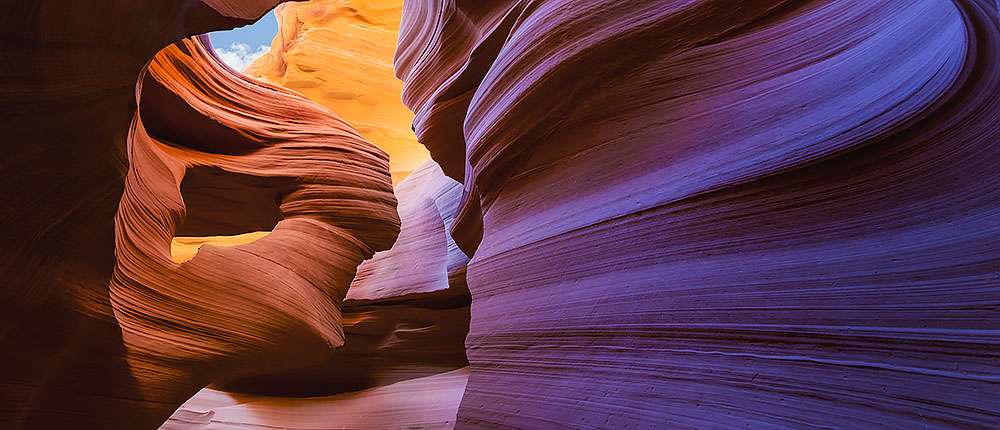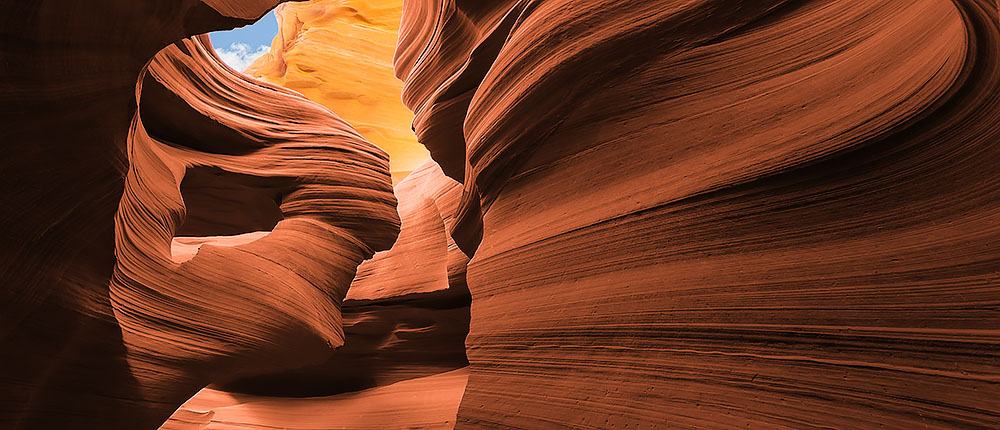Slot canyons are vey popular photo destinations for landscape and fine art photographers. Slot canyons are generally very narrow and rather deep grooves cut through sandstone by the power of flowing water. Some are open on the ends and you can simply walk in. Others are buried below a stream bed and you have to climb down to enter.
The photo above was taken at Lower Antelope Canyon near Page, Arizona. It’s the type of slot canyon where you have to climb down a 10 foot ladder to get in. Once you’re in the slot, you travel about a quarter mile, gradually moving down hill. At the other end, you have to climb up about 70 stairs to get back to the surface.
Most landscape photography is done around sunrise or sunset. But slot canyons are at their best in the middle of the day when the sun is high overhead. That’s the best time for the sun’s rays to penetrate deep into the canyon where it can highlight the shapes and textures.
This photo above also illustrates another feature of slot canyons. One of the things you may not see in person is the variation in color. Our eyes do an amazing job of compensating for differences in light intensity and color. When you’re inside a slot canyon, we tend to see the red sandstone as all one color. But, if you look carefully, you’ll see that there are actually differences in the colors. Where the sun shines on the sandstone, it appears bright yellow. As the light reflects off the sandstone, it accentuates the colors and causes some of the sandstone to seem to glow red and orange.
But, some areas receive very little light, either direct or reflected, and at the right time of year you can see the reflection of the blue sky on the sandstone. When you mix red and blue, you get purple. The photo below shows what you see if you’re not looking for the color differences.
Cameras (both film and digital) tend to exaggerate differences in brightness and color. Normally, that creates challenges for photographers to try to capture what our eyes see. In this case, though, I see it as a virtue where a fine art photograph can show us what we normally won’t see. Colors that are barely visible to our eyes are much more apparent in a photo. In the end, the photo is about more than just the flowing shapes; it also has a striking contrast between the orange and purple areas.
Fortunately, you can train yourself to see the variations. If you have the opportunity to tour a slot canyon, look for areas where the red sandstone looks gray. Those are the areas that will tend to photograph as blue, especially when you adjust the white balance toward a “tungsten” setting to compensate for the overwhelming amount of orange light.


